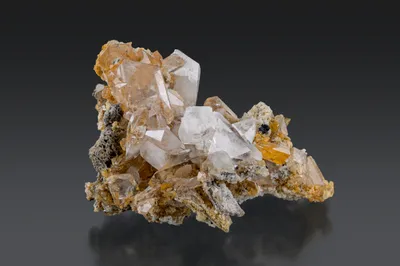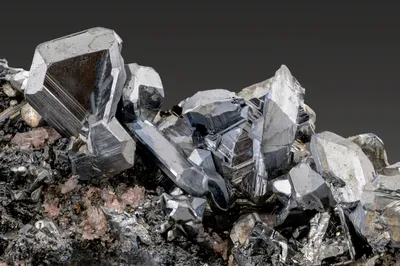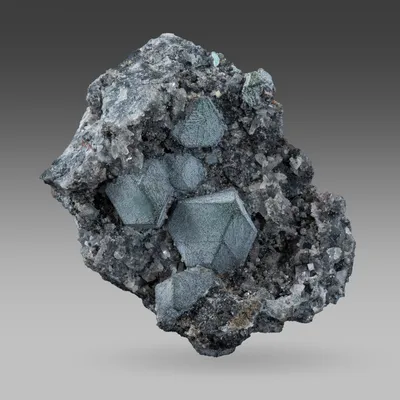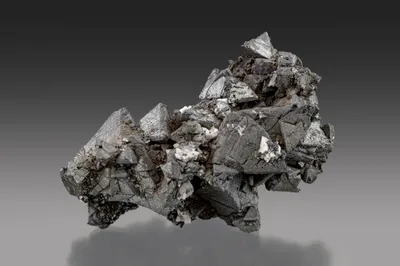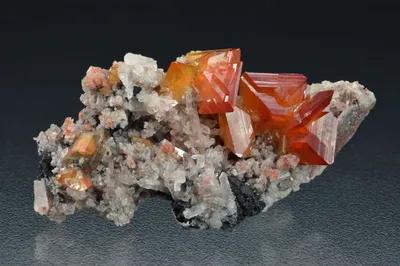Mineral Species
Krieselite
Type Locality
Yes
Composition
(Al,Ga)2(GeO4)(F,OH)2
Crystal System
Orthorhombic
Status at Tsumeb
Confirmed (type locality)
Abundance
Extremely rare
Distribution
Second and third (?) oxidation zones
Paragenesis
Supergene
Entry Number
Species; TSNB197
Type Mineralogy
Krieselite was discovered in tiny vugs in sulphide ore on a specimen purchased by Marcus Ecker from a mineral dealer in 1994 and later provided by him for study. Analysis showed it to be the germanate analogue of topaz. Krieselite, IMA 2000-043a, was named for F. W. Kriesel, chief chemist at the Tsumeb mine in about 1920 (Schlüter et al. 2010). Type material is conserved at the Mineralogisches Museum, Universität Hamburg, Germany (catalogue number MMHH TS 385).
General Notes
On the type specimen, krieselite occurs in tiny vugs in tennantite/chalcocite/galena/germanite ore, with brownish anglesite, graphite, quartz, and wulfenite. The krieselite forms minute (200 µm) hemispherical aggregates of fibrous crystals with individual fibres typically 50 µm in length by 5 µm wide. The colour is beige to white and crystals are translucent with a greasy lustre (Schlüter et al. 2010).
According to Schlüter et al. (2010) neither the date of collection nor the level of the mine from which the type material originated is known. However, a very rich specimen of krieselite in the Feinglos Collection at Harvard University (MGMH 2122.4.8501T) is described on Feinglos’ datacard as "part co-type, from author (Schlüter via Gebhard)" and Gebhard’s accompanying label reads: "Krieselite with chalcocite, Tsumeb 46 Level". This is surprising given that the level from which the type specimen originated was said to be unknown in the original description. The paragenesis on the Feinglos specimen appears to match the type assemblage described by Schluter et al. (2010).
A specimen in the Southwood Collection (MS2014.294), bears a Gebhard label which reads "Krieselite with stolzite, 44 Level".
Krieselite has also been identified on material collected in 1972 from 29 Level (in the second oxidation zone), in association with stottite and schneiderhöhnite (Von Bezing et al. 2016).
Pseudomorphs
anglesite; chalcocite; galena; germanite; graphite; plumbogummite; quartz; schneiderhöhnite; siderite; stolzite; stottite; tennantite-(Zn); wulfenite
